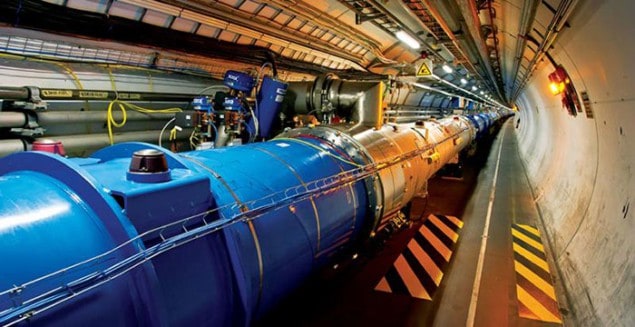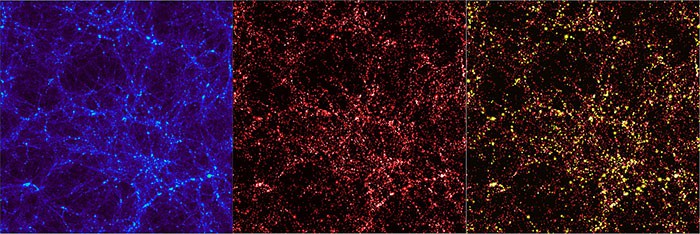Flash Physics is our daily pick of the latest need-to-know developments from the global physics community selected by Physics World‘s team of editors and reporters

LHC smashes luminosity record
CERN’s Large Hadron Collider (LHC) has surpassed its luminosity goals for 2016, delivering 40 inverse femtobarns against a target of 25. For 2016, the LHC was expected to reach a peak luminosity of 1034 cm–2 s –1 , but by the end of the run it was regularly operating 30% above that. The LHC also spent about 60% of its operational time delivering stable beams against a target of 50%. “I can’t overstate the significance of this, because the total number of collisions we deliver to the experiments – the integrated luminosity – determines the capacity they have to carry out the great research that they do,” says Frédérick Bordry, CERN director for accelerators and technology. Now that proton–proton collisions are complete for this year, the LHC will begin a two-week programme colliding lead-ions with protons at energies of 5.02 TeV and 8.16 TeV, respectively. This is the first time the LHC has performed lead-proton collisions since 2013.
Study charts decades of gender bias in astronomy citations
Astronomy papers with women as the first author have received 10% fewer citations than comparable papers with male first authors over the past 65 years. That is one conclusion of a study by Neven Caplar, Sandro Tacchella and Simon Birrer at ETH Zurich in Switzerland, which looked at more than 200,000 papers covering published in 1950–2015. While the difference between male and female citations fell between 1950 and 1990, the disparity has remained at about 6% since 1990. Women first authors also wrote 19% fewer papers than males in the seven years following their first paper. The trio also found that the number of papers with a female first author increased from 5% in the 1960s to 25% today. Writing in a preprint on arXiv, the trio also found that prestigious journals such as Science and Nature had the slowest increases in numbers of female-authored papers over the 65 year period.
Supercomputer nails down axion-mass range

In yet another attempt to nail down the elusive nature of dark matter, a European team of researchers has used a supercomputer to develop a profile of the yet-to-be-detected entity that appears to pervade the universe. Physicists led by Zoltan Fodor of the University of Wuppertal have predicted the masses of dark-matter candidates called axions using the JUQUEEN (Blue Gene/Q) supercomputer at the Forschungszentrum Jülich research institute in Germany. These hypothetical particles are promising dark-matter candidates that are not described by the Standard Model of particle physics but are predicted by an extension to quantum chromodynamics (QCD). Axions are thought to have exceedingly small masses and could, in theory, be detected directly. “However, to find this kind of evidence it would be extremely helpful to know what kind of mass we are looking for,” says team-member Andreas Ringwald at DESY in Hamburg. “Otherwise the search could take decades, because one would have to scan far too large a range.” The team’s simulations showed that if axions exist, they should have a mass of 50–1500 meV, making them up to 10 billion times lighter than electrons. This would require every cubic centimetre of the universe to contain on average 10 million such ultra-lightweight particles. “The results we are presenting will probably lead to a race to discover these particles,” says Fodor. The team says that within the next few years, it should be possible to either confirm or rule out the existence of axions experimentally. The simulations are described in Nature.
- You can find all our daily Flash Physics posts in the website’s news section, as well as on Twitter and Facebook using #FlashPhysics. Tune in to physicsworld.com later today to read today’s extensive news story on the puzzling excess of atmospheric muons.



